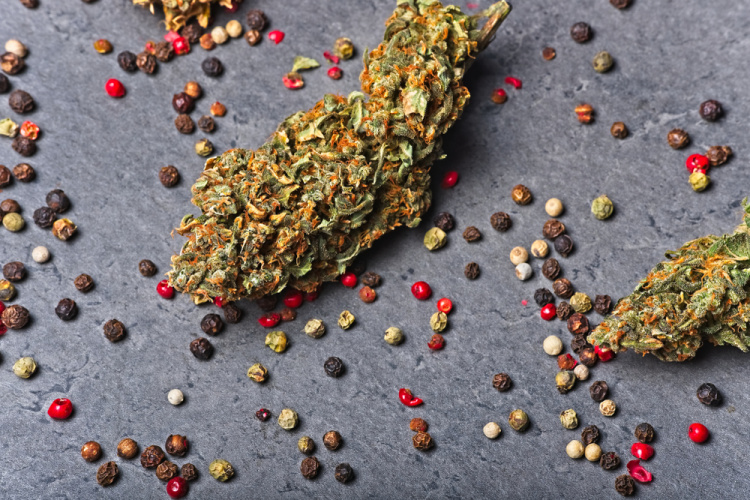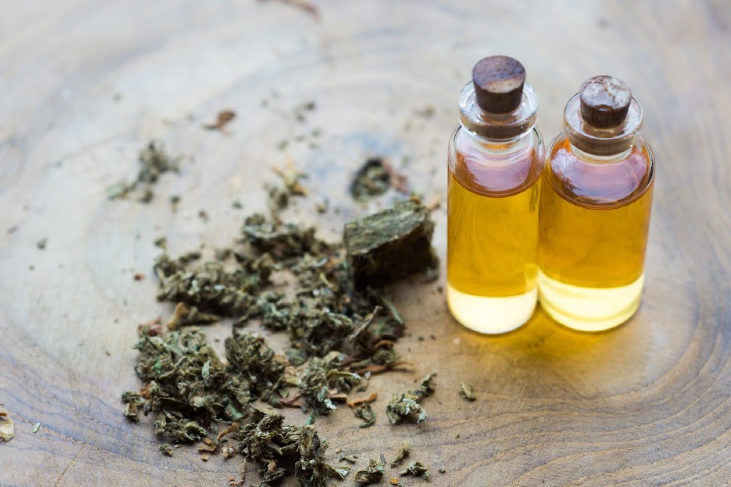Want to deepen your understanding of cannabis? Taking a look at terpenes is a good place to start. Understanding what terpenes are will give you insight not only into how strains smell and taste, but also what effects they may possess. And today, we’re going to look at one cannabis terpene in particular: caryophyllene (called beta-caryophyllene in some circles).
What are Terpenes
If you’ve been following our series on terpenes, you’re probably familiar with the common ones in cannabis, such as pinene and limonene. On the other hand, if you’re unfamiliar, this is the place to start.
Terpenes in Nature
First, let’s cover terpenes in a broad sense. Terpenes, which comprise the most diverse group of organic compounds in nature, have a reputation for carrying flavor and taste. They develop naturally in many plants and animals.
Generally, terpenes serve one of two purposes. First, they may ward off predators or pests with their potent aromas. Second, they may help facilitate certain symbiotic relationships. For example, flowering plants can use terpenes to attract bees for pollination.
As you may have guessed, countless plants develop a wide variety of terpenes. And one family of plants in particular has a special relationship with terpenes: cannabis.
Terpene Profile: Caryophyllene
Now that you have a better idea of what terpenes are, let’s look at one specifically: caryophyllene, also known as beta-caryophyllene. With a sharp, spicy taste and scent, you can find caryophyllene in many dinnertime dishes. Specifically, this strain gives pepper its trademark fragrance.
This terpene’s flavor and aroma aren’t it’s only strong suits, though. Out of all the cannabis terpenes, caryophyllene demonstrates one particularly special trait. It’s the only terpene that also acts on cannabinoid receptors in your body.
Specifically, research suggests that caryophyllene interacts with CB2 cannabinoid receptors. These are the same receptors that CBD uses to exert its possible influence on the body. In other words, caryophyllene is both a terpene and a cannabinoid.
As a result, this compound may have some fairly potent properties—one of which you might typically associate with CBD. Namely, caryophyllene appears to have significant anti-inflammatory effects.
This means that strains with high caryophyllene content may also possess anti-inflammatory properties. Some common strains with caryophyllene include:
- Sherbert: Want a sweet-tasting strain made from modern genetics? Sherbert is the way to go. Its high bridges the gap between relaxing and euphoric, and the sharp taste of caryophyllene helps make its sweet flavor really pop.
- White Widow: For a classic strain infused with caryophyllene, you can’t beat White Widow. Like Sherbert, this legendary strain is a balanced hybrid that possesses both uplifting and low-key vibes.
- Sour Diesel: Here’s another legendary strain that features caryophyllene in its terpene profile. Sour Diesel features sativa genetics that invigorate without overstimulating. Additionally, its spicy flavor and aroma both feature caryophyllene’s spicy notes along with dominant tones of diesel fuel. Want to learn more? Check out our version of Sour Diesel for yourself.
If these strains don’t quite tickle your fancy, don’t worry. You can find plenty more in our digital store. And don’t forget to preorder online for maximum convenience.






